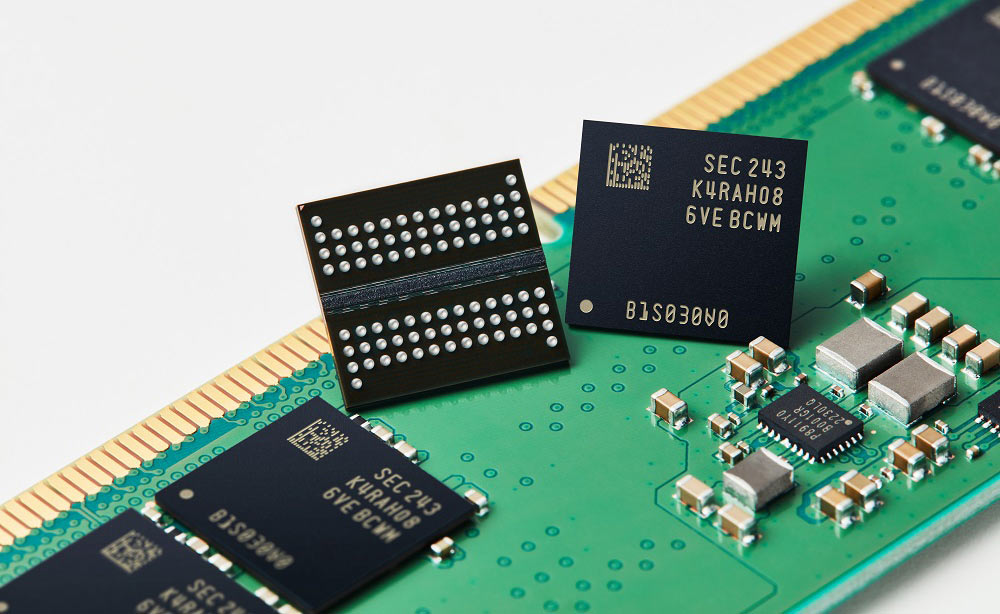Samsung has claimed to have reaffirmed its leadership in DRAM by launching mass production of 16 gigabits (GB) of 12nm DDR5 DRAM. The South Korean electronics giant says the resulting memory integrated circuits from this new process will reduce power consumption by about a quarter compared to the previous generation and improve wafer productivity by a fifth. Additionally, these latest-generation memory chips will offer a maximum data transfer rate of 7.2 Gbps.
Speaking about the manufacturing stage, Jooyoung Lee, Executive Vice President of DRAM Products and Technology at Samsung Electronics, said, "With differentiated process technology, Samsung's 12nm-class DDR5 DRAM memory delivers outstanding performance and energy efficiency. However, PC users will have to wait as the first use of these 12nm DDR5 memory integrated circuits will be in applications such as data centers, artificial intelligence, and next-generation computing.

Samsung claims that the development of 12nm-class DRAM was made possible through the "use of a new high-K material." In further detail, the transistor gate material used in these integrated circuits has higher capacitance, making its state easier to accurately distinguish. Additionally, Samsung's efforts to lower operating voltage and reduce noise also helped in delivering this optimized solution.
These are still 16GB integrated circuits, so Samsung has not made further advancements in its density roadmap with these DRAM chips. Instead, the benefits announced relate to fuel efficiency, speeds, and platform economy. If you want numbers, Samsung has clarified that the 12nm DDR5 integrated circuits reduce power consumption by 23% compared to the previous generation and improve wafer productivity by 20%.
Will this mean faster DDR5 modules?
We've already mentioned that the new DRAM ICs offer a data transfer rate of 7.2 Gbps. Samsung says that in theory, this means that a DRAM-to-DRAM transfer of two 30GB UHD movies could take place in about one second. However, it doesn't point out that this is the same data transfer rate as the one announced for the previous generation 14nm DRAM integrated circuits. That doesn't rule out the potential of newer DDR5 DRAM for perhaps better overclocking; for that information, we'll have to wait and see.
Samsung says that it has already confirmed that the new 16GB (12nm) DDR5 integrated circuits have undergone compatibility tests for use with AMD systems. It is also working closely with other companies.

Deja una respuesta